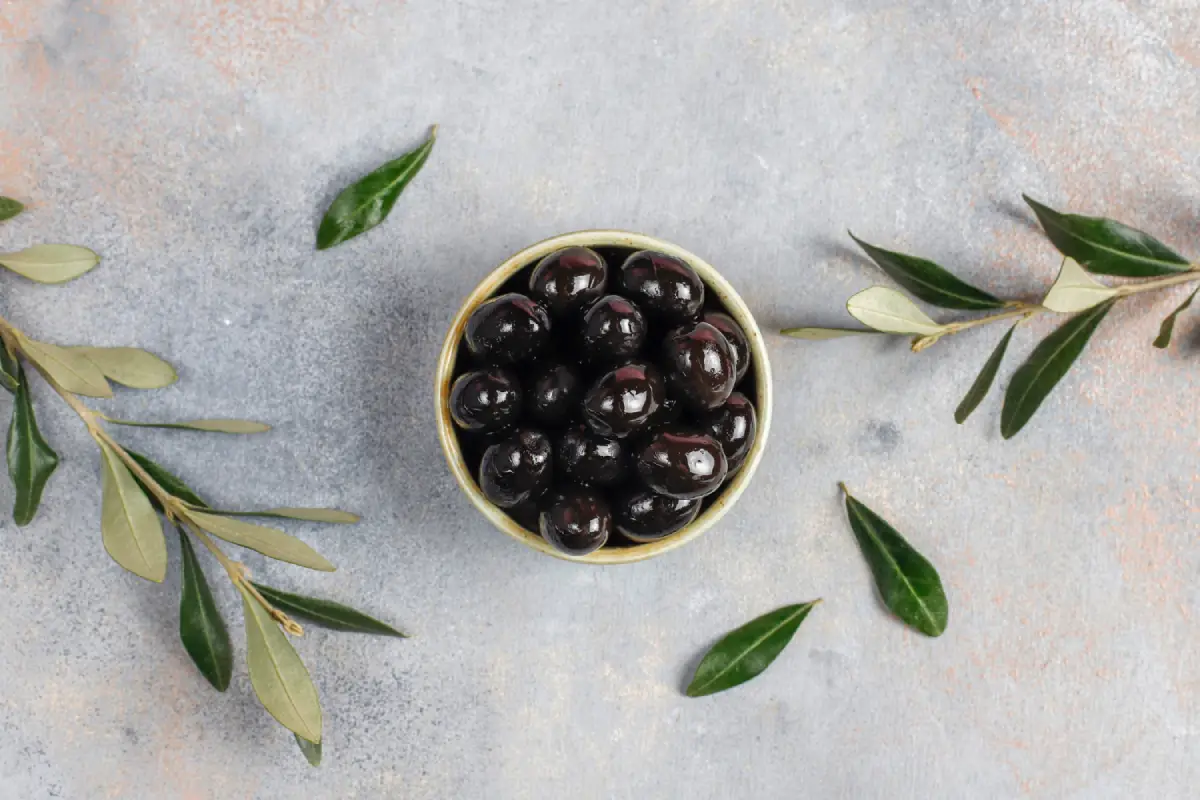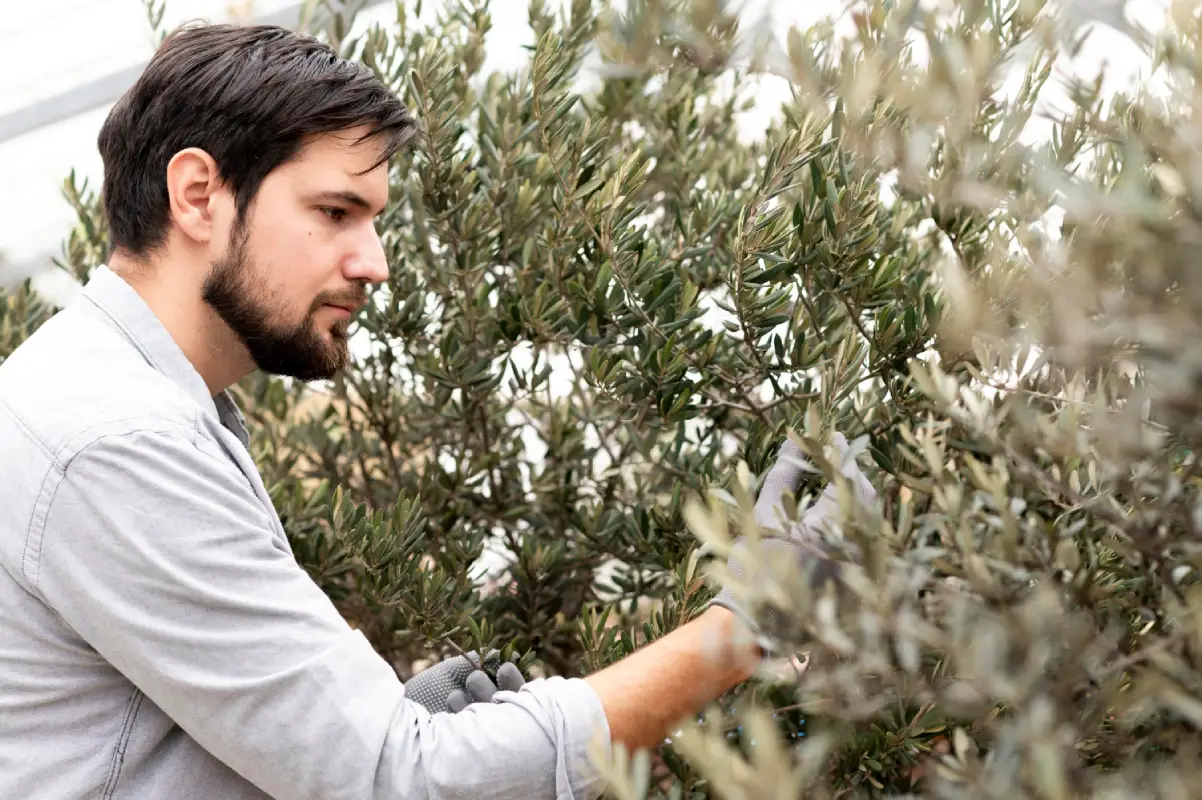Olives are a staple in many diets worldwide, especially in the Mediterranean. Among these, black olives stand out for their rich flavor and striking color. This article, “Exploring the Natural Hue: The Color of Black Olives,” delves into whether their dark color is natural. It sheds light on the processes from the tree to the table.
Black olives play a key role in healthy diets and are versatile in cooking. Yet, there are myths about their color. This piece aims to clarify their natural coloration, the impact of cultivation, and their nutritional value. We will explore how their color affects their role in our meals and health.
This journey will enhance your understanding and appreciation of black olives. Let’s uncover the truth about their color and celebrate their contribution to our culinary world.
Olive Varieties and Color Origins
Olives, celebrated for their diversity, come in numerous varieties that influence their color, size, and flavor. The color of an olive significantly indicates its type and stage of ripeness. Typically, olives transition from green to darker shades as they mature, culminating in a spectrum of colors from purple to black. However, it’s important to note that not all olives undergo this color transformation, and the ripening process varies among different types. For a deeper understanding of olive varieties and their characteristics, the International Olive Council provides comprehensive insights and classifications.
Green vs. Black Olives
Central to understanding olive coloration is the distinction between green and black olives. Green olives are harvested before they reach full maturity, retaining a vibrant green hue due to their high chlorophyll content. Conversely, black olives are picked at full ripeness, by which point their color has deepened to a rich black, indicating a complete ripening cycle. This difference is not merely aesthetic; it profoundly affects the olive’s flavor profile and nutritional benefits.
Ripeness and Color
During the ripening process, olives undergo significant changes. Initially, the dominant green pigment, chlorophyll, starts to break down. Consequently, other pigments, particularly anthocyanins, become more prominent, giving the olives their dark, mature color. The presence and concentration of these pigments vary based on the olive variety, contributing to the wide range of colors observed in ripe olives.
Varietal Influence
Moreover, the genetic makeup of the olive variety plays a crucial role in determining its final color. Certain varieties, like the renowned Kalamata, are genetically predisposed to develop a black color when fully ripe. Other varieties may retain their green coloration even at full maturity, showcasing the genetic diversity among olive types.
Understanding the Ripening Process
Furthermore, the transition from green to black is a fascinating journey influenced by environmental factors such as sunlight exposure, temperature fluctuations, and agricultural practices. These elements can either hasten or delay the ripening process, directly impacting the olive’s color transition. The University of California Agriculture and Natural Resources offers detailed research on the growth and ripening stages of olives, shedding light on the factors that influence their color change.
Harvest and Post-Harvest Influences
Additionally, the timing of the harvest is pivotal. Olives harvested early in the season remain green and tend to have a firmer texture and a somewhat bitter taste. On the other hand, olives left to ripen on the tree longer soften and darken, developing a fuller flavor profile. After harvesting, the curing and fermentation processes olives undergo can further modify their color and taste, highlighting the complexity of achieving the desired characteristics in the final product.
This detailed examination of the factors influencing olive coloration, particularly for black olives, underscores the intricate interplay between nature and nurture in agriculture. As we delve further into the nuances of harvesting techniques and post-harvest processing, we gain a deeper appreciation for the art and science behind the beloved black olive.
Harvest and Post-Harvest Influences on Black Olives
The journey to the perfect black olive color starts with the harvest and doesn’t end there. Let’s break down these critical stages.
The Timing of Harvest
Harvest timing is key. Early-picked olives stay green, lacking the time to darken. In contrast, olives harvested at full ripeness boast the dark hue we associate with black olives. This timing affects not just color but also taste and nutrition.
Curing and Fermentation’s Role
Curing and fermentation are next. These steps are vital for taste and color. Olives may be cured in water, brine, dry salt, or lye. Brine curing, for example, often darkens olives and enriches their flavor.
Oxidation and Color Change
Some black olives owe their color to oxidation. This process, used during curing, alters the olive’s surface from green to black. It’s common in canned black olives, where oxidation is followed by stabilization.
Nutritional Enhancements
These post-harvest processes can also boost the olives’ nutritional value. Fermentation, in particular, may increase beneficial compounds, highlighting the health aspect of black olives. To explore the health benefits and nutritional content of black olives in more detail, visit the Nutrition Data website, which provides comprehensive nutritional profiles for a wide range of foods.
FAQs About Black Olives’ Color
Are olives naturally black?
Olives are not naturally black from the start. They begin as green and turn black as they ripen, depending on the variety. Some olives are harvested while green and never turn black, whereas others naturally darken as they mature.
Are black olives black when picked?
Yes, black olives are typically black when picked if they are allowed to fully ripen on the tree. The color change from green to black signifies that the olive has reached full maturity.
Can black olives be brown?
Black olives can appear brownish due to specific curing processes or as a result of oxidation during storage. The exact shade can vary based on the type of olive and the methods used in its preparation and preservation.
What is the true color of olives?
The true color of olives varies widely. It ranges from green in their unripe state to dark purple or black when fully ripe. The specific variety of olive, along with its ripeness and treatment process, determines its final color.
Conclusion
The color of black olives stems from genetics, ripening, and post-harvest practices. From their growth under the sun to the complex curing methods, every step matters. These processes not only determine the olives’ appearance and flavor but also their health benefits.
Understanding the truth behind black olives’ color deepens our appreciation for them. Whether in Mediterranean cuisine, as a cocktail garnish, or a snack, black olives charm us with their rich taste and vibrant color. This journey from tree to table showcases the blend of nature and craftsmanship that defines the essence of black olives.



